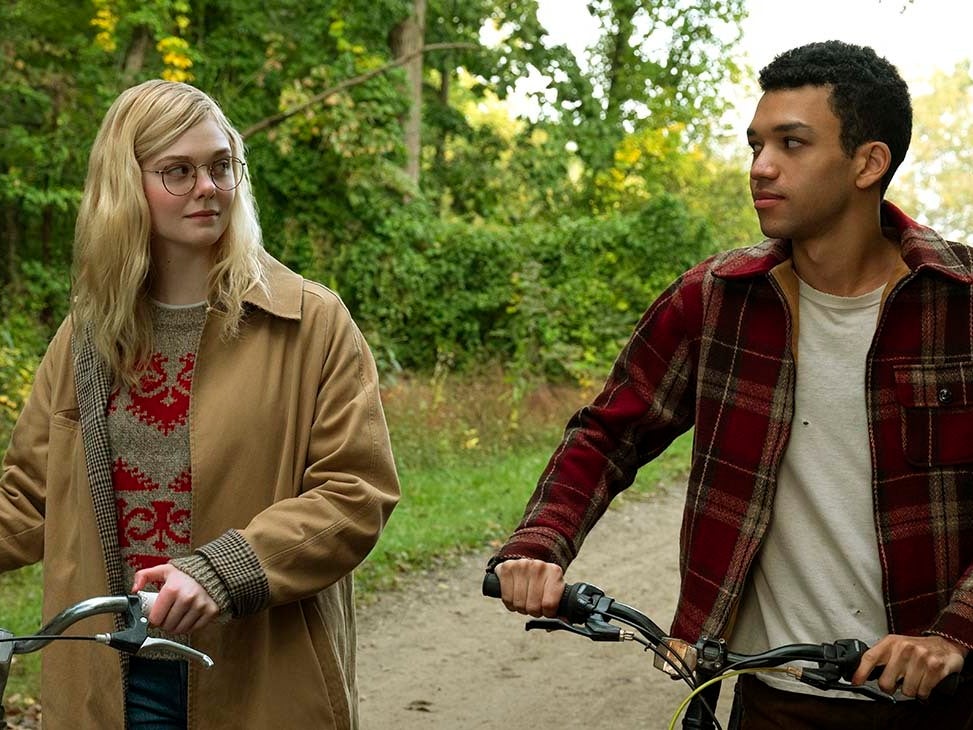Teenagers want a trigger warning ahead of All the Bright Places – and that’s a good thing
Calls for trigger warnings ahead of the latest Netflix hit suggest a more compassionate generation than the ones that came before it, writes Adam White


Your support helps us to tell the story
From reproductive rights to climate change to Big Tech, The Independent is on the ground when the story is developing. Whether it's investigating the financials of Elon Musk's pro-Trump PAC or producing our latest documentary, 'The A Word', which shines a light on the American women fighting for reproductive rights, we know how important it is to parse out the facts from the messaging.
At such a critical moment in US history, we need reporters on the ground. Your donation allows us to keep sending journalists to speak to both sides of the story.
The Independent is trusted by Americans across the entire political spectrum. And unlike many other quality news outlets, we choose not to lock Americans out of our reporting and analysis with paywalls. We believe quality journalism should be available to everyone, paid for by those who can afford it.
Your support makes all the difference.Generation Z are whatever wrong-headed newspaper columnists want them to be. Depending on what you read, today’s teens are either too militant in their beliefs or too bereft of them. Having only ever been alive in the internet age, they are reactionary snowflakes or emotional vacuums.
When Gen-Z are passionate about something – like, say, the new Netflix film All the Bright Places – they’re written off as melodramatic scolds. But if you were to dig past the noise, you’ll realise how similar the generations really are.
Starring Elle Fanning and Justice Smith, All the Bright Places is a heartfelt and appropriately sincere adaptation of a YA bestseller, awash in heavy themes such as mental health and suicide. It’s also provoked controversy since its arrival on Netflix on Friday, with a number of teenagers chastising the platform for not introducing it with a “trigger warning”. For the uninitiated, think of trigger warnings as slightly more specific BBFC certificates, used to notify audiences of content that may provoke negative or damaging responses.
While it’s wrapped in “Netflix romcom” gloss, All the Bright Places doesn’t shy away from its more substantial elements. Fanning is Violet, a teenage girl mourning the loss of her sister, and who contemplates taking her own life. Smith is Finch, a boy dealing with his own trauma and whose undiagnosed mental illness leads to tragedy.
Like Jennifer Niven’s source material, the film is neither sensational nor exploitative in its depiction of mental illness, and approaches its subject matter with tremendous empathy. Characters hurt, death is finite, and harrowing emotional crisis isn’t used to generate a kind of romantic glamour, either.
Netflix, however, missed the bar when it came to its own responsibilities as a platform. Particularly in the wake of similar controversy that engulfed their series 13 Reasons Why, it feels like a staggering error of judgement to not significantly publicise the darker elements of the film’s plot. 13 Reasons Why, which will come to a close this year after four seasons, was roundly criticised in 2017 for its depiction of teen suicide and rape. America’s National Institute of Health also declared that there was a 29 per cent rise in American 10- to 17-year-olds taking their own lives in the month after the series first dropped on Netflix.
As a result, Netflix added content warnings to episodes of the series, and removed more explicit scenes of suicide from the show’s first season entirely. You would think that after such controversy, the platform would have taken a similar approach to All the Bright Places – particularly when the production itself had gone out of its way to handle such topics delicately.
While Netflix must determine a consistent approach to potentially dangerous subject matter involving young people, there is an unexpected silver lining to the controversy. That so many were provoked into action by the lack of a trigger warning, whether having been affected themselves or worried for others, speaks to the continued power of cinematic empathy. In a culture dominated by content factories battling for ever-dwindling attention, it's proof that a single film is still capable of sparking passion.
For as long as there have been teenagers, there have been fictional tales of teenage tragedy. From Ali MacGraw’s terminal cancer in Love Story (1970), to Mandy Moore croaking in A Walk to Remember (2002), generations of young people have paid money to see versions of themselves have sex, cry and die against beautiful, all-American scenery.
Today’s teens aren’t any different. Regardless of death being largely meaningless in the Disney movies that dominate the marketplace, with on-screen fatalities so often reversed with ease, there is still a desire for traditional stories of romance, and more human and relatable conflict. Despite what you may have heard, they haven’t been phased out in favour of TikTok or SpongeBob memes. Instead, they continue to hold a valuable currency.
We like to imagine that every generation has their own distinct approach to the world, and that those younger than us are less cool and far more annoying than we were back in the day. But beyond the hysterical ways in which they are so often written about, Generation Z are driven by the same wants and desires. And truthfully, if the All the Bright Places snafu has taught us anything, it’s that they’re far ahead of us when it comes to compassion.
Join our commenting forum
Join thought-provoking conversations, follow other Independent readers and see their replies
0Comments